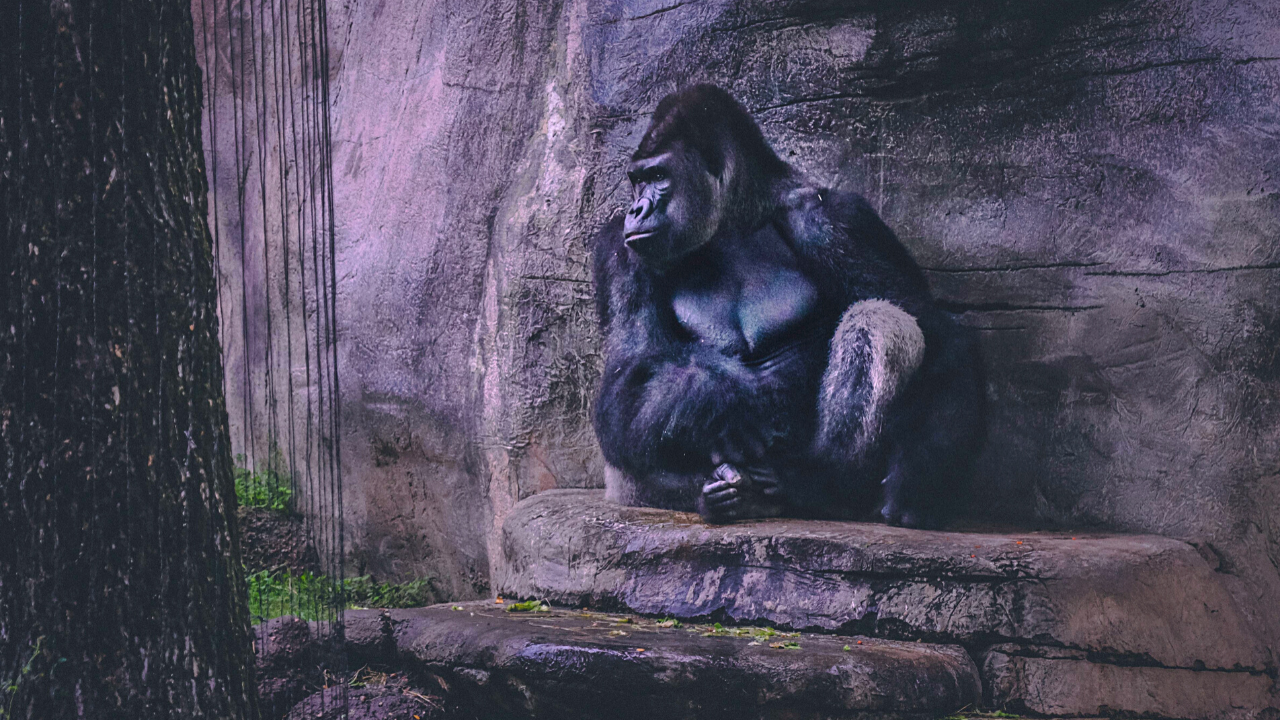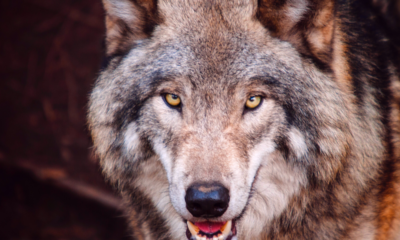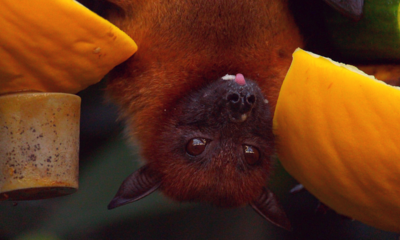
Animals
5 Biggest Gorillas In The World
Also known as gentle giants, gorillas have a lot of resemblance to human beings. In fact, they are the only animals that have the closest relation to humans. The genetic code of the gorillas matches 98.3% with humans.
Like all animals, gorillas also play a very important role in the local biodiversity as they help in the spread of seeds of the fruits they consume. Gorillas are very powerful and are mostly native to central Africa.
Did You Know?
The population of the gorilla living in the western lowlands of Africa is approximately 100,000 – 200,000! Since they live within deep forest areas, nobody knows for sure their exact population.
The gorilla with the least population and is almost on the verge of extinction is the cross river gorilla. This animal has only 300 individuals of its community left.
5. Mountain Gorilla
Location: East-Central Africa
Weight: 430 lbs
A subspecies of the eastern gorilla, the mountain gorilla became known to the world only in 1902. As compared to other subspecies, this gorilla has longer hair, jaws, and teeth.
The mountain gorillas are native to east-central Asia. Here they are found in two groups – one in the Virunga volcanoes and one at Bwindi Impenetrable National Park, Uganda.
In a group of these mountain gorillas, there is a single dominant male, three adult females, and up to five children. Whenever there is an attack by other animals in the forest, the male defends his group and not the entire territory.
It has now been more than 100 years that this particular species was discovered and during this entire time, this gorilla has witnessed massive huntings, wars, destruction of forests, and capture for illegal trade.
All these factors led to a downfall in the population of these beautiful creatures and at one point, it was believed that their numbers had almost become extinct in the very same century in which they had been discovered.
These factors led to a dramatic decline in numbers. Indeed, there were fears that the mountain gorilla would become extinct in the same century it was discovered. However, due to rampant conservation efforts, the population of these gorillas increased from 620 in 1989 to as many as 1,004 today. Since then, their number is closely and intensely monitored.
Did You Know?
Mountain gorillas love to eat and spend almost a quarter of their day eating leaves and shoots. Howeever, they have also been seen eating snails, ants, and tree barks, which is also a rich source of sodium.
4. Cross River Gorilla
Location: Cameroon and Nigeria
Weight: 440 lbs
The Cross River gorilla bears a lot of resemblance to the western lowland gorilla. With only 200-300 of them left, these gorillas have now become an endangered species in Africa.
All-out efforts are being made to conserve these beautiful creatures in Cameroon and Nigeria. These gorillas have been the victim of endless poaching and loss of forest cover over the years. The tiny population that is left of these gorillas means that they have a very low genetic diversity.
This is the reason why the population of these gorillas is much less able to cope with diseases. Also very vulnerable to inbreeding, it gets very difficult for the cross river gorilla to reproduce.
Did You Know?
The Cross River gorillas become sexually active at the age of 10. They then start having babies every four years. The gestation period of the gorillas lasts for nine months. After giving birth, these gorillas devote all their time to take care and nurturing their children up to 3-4 years of age. During this time, they do not reproduce.
3. Titus
Location: Virunga Mountains
Weight: 450 lbs
Titus, the gorilla king was born in 1974. During that year, a primatologist named Dian Fossey introduced Titus’s family to Kelly Stewert, the daughter of Jimmy Stewert. Kelly saw a baby gorilla for the first time and was fascinated by him, she named him Titus.
The struggle of Titus and his entire life, right from his birth till his last days, has been chronicled in the Gorilla King movie as well. Titus belonged to a very strong family in Rwanda that included his father, mother, and many siblings. When he was four years old, his father was killed by poachers.
Soon after, he lost his sister in a coup attempt, and sometime later, his mother and other siblings ran away and Titus was left orphaned. Titus lead a very eventful life and faced a lot of challenges and struggles. At age 35, in 2009, Titus passed away and the officials at the Rwanda national park, where he had been lodged, said that the gorilla succumbed to old age.
Titus is remembered as the most remarkable gorilla to have ever lived. When he passes away, all the primatologists and naturalists around the world, expressed their sorrow and commended Titus’s life.
Did You Know?
At the time of his birth, it was believed that Titus was an underdeveloped baby and that he would not survive. In fact, with the rampant poaching during that time, this suspicion gained momentum. Titus’s uncle and father had been killed by poachers for the ornamental value of their skulls and paws.
2. Eastern Lowland/ Grauer’s Gorilla
Location: Lowland tropical rainforests in the eastern DRC
Weight: 462 lbs
Of the four subspecies of gorillas, the Eastern Lowland gorilla is one of the largest. This gorilla also goes by the name – Grauer’s gorilla. The scientific name of this gorilla was kept in the honor of an Austrian scientist Rudolf Grauer, who was the first person to have ever identified this species in the 20th century.
What differentiates this particular subspecies of gorillas from the rest of the gorillas is that they have very large bodies and short muzzles. However, despite their huge size, these gorillas feed mainly on fruits and other vegetation.
The Eastern Lowland gorilla has a dark fur coat and they do not have any hair on their face, hands, feet and ears. Its population is found in selected regions including the Democratic Republic of Congo, Maiko National Park, Kahuzi-Biega National Park, the Tayna Gorilla Reserve and Itombwe Mountains region.
Did You Know?
Research shows that the population of the Eastern Lowland gorilla has declined by over 50% over the last 30 years. As a result of its decline in population, they have now been declared as an endangered species by the Red List of the International Union for Conservation of Nature.
1. Western Lowland Gorilla
Location: Angola, Cameroon, Central African Republic, Republic of the Congo
Weight: 600 lbs
The Westland lowland gorilla is the biggest gorilla in the world. It weighs 600 pounds and when standing, its height is four to six feet, which is the height of an average man. The scientific name of the Westland gorilla is Gorilla gorilla gorilla. The average life span of this mighty beast in the wild is upto 35 years.
The western lowland gorilla has a vast population and they are found in huge numbers in Cameroon, the Central African Republic, the Democratic Republic of Congo and Equatorial Guinea. Since these animals dwell deep inside forests of Africa., their exact number is not known to anyone.
These gorillas have brown-grey fur and auburn chests. A striking feature of their body is the presence of a silver hairline that goes down till their back and due to this, these gorillas have earned the name of the silverback.
Despite their humongous size, these gorillas feed mainly on fruits and other vegetation.
Did You Know?
About 50-75% of the Western Lowland gorillas leave their own birth groups once they achieve puberty. The males travel for years in bachelor groups until they become silverbacks and after that, they form their own groups by attracting females.
Trisha Katyayan is an experienced journalist who has print-media background and loves to research, organize and curate factual information in a presentable way.
















